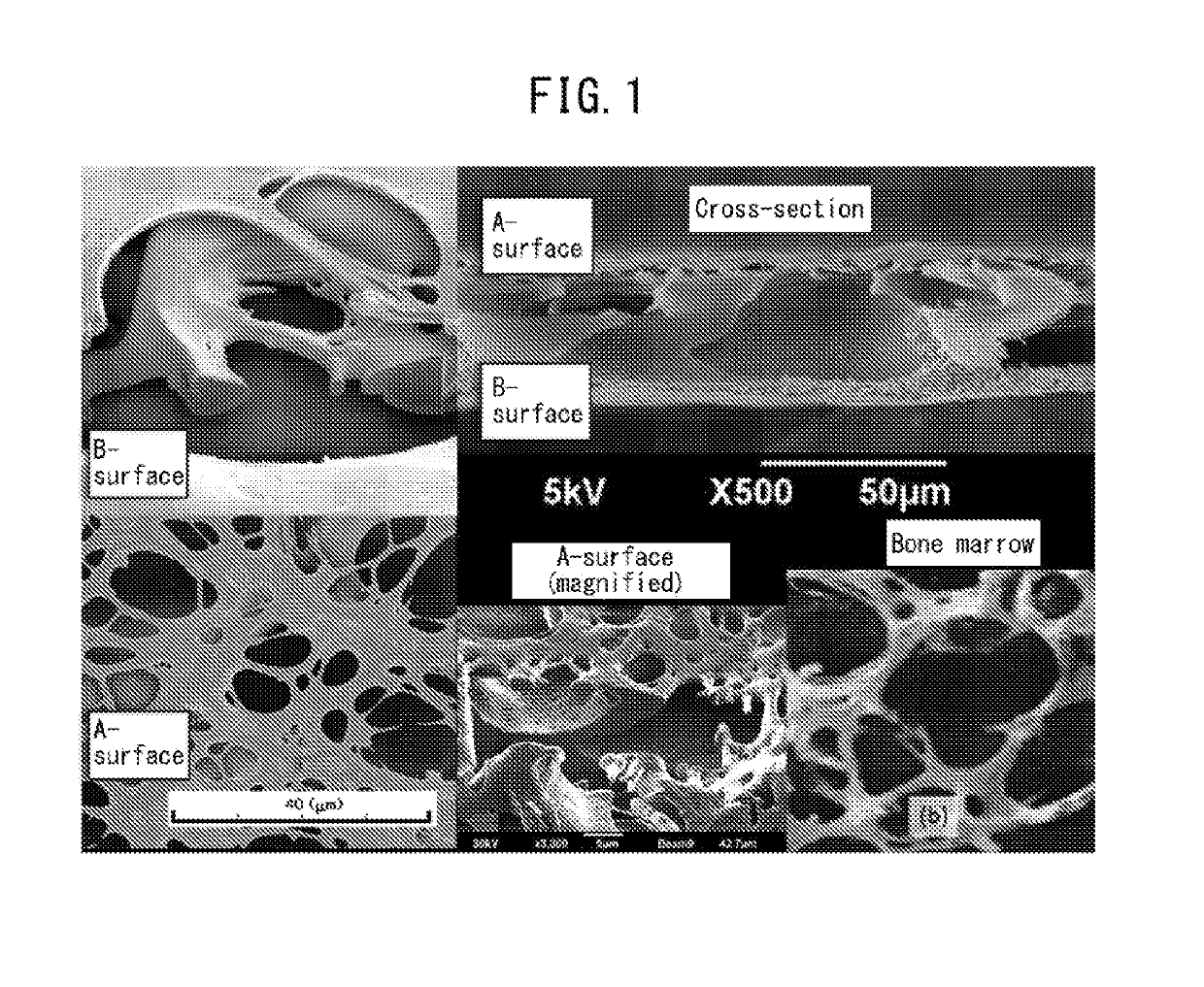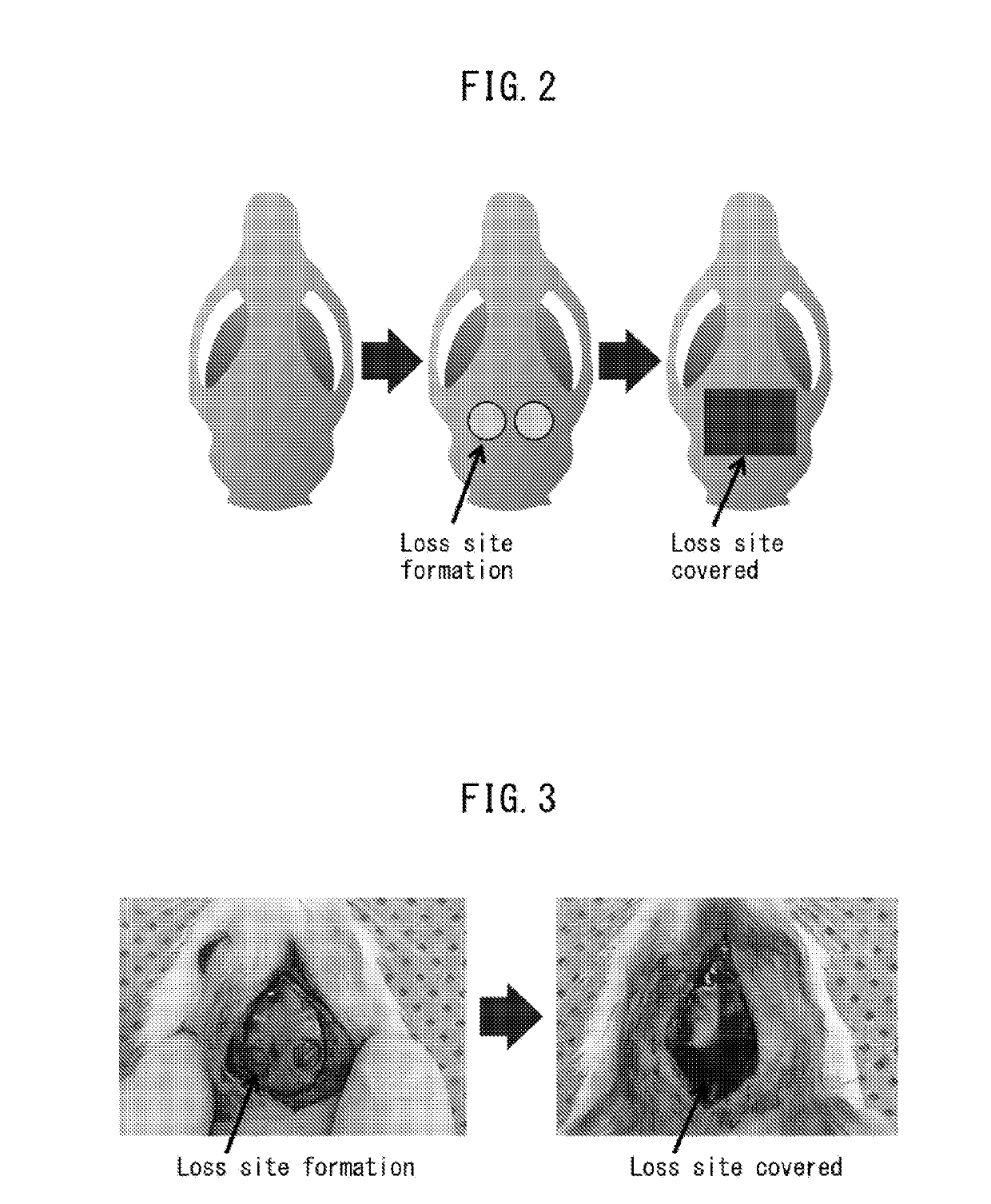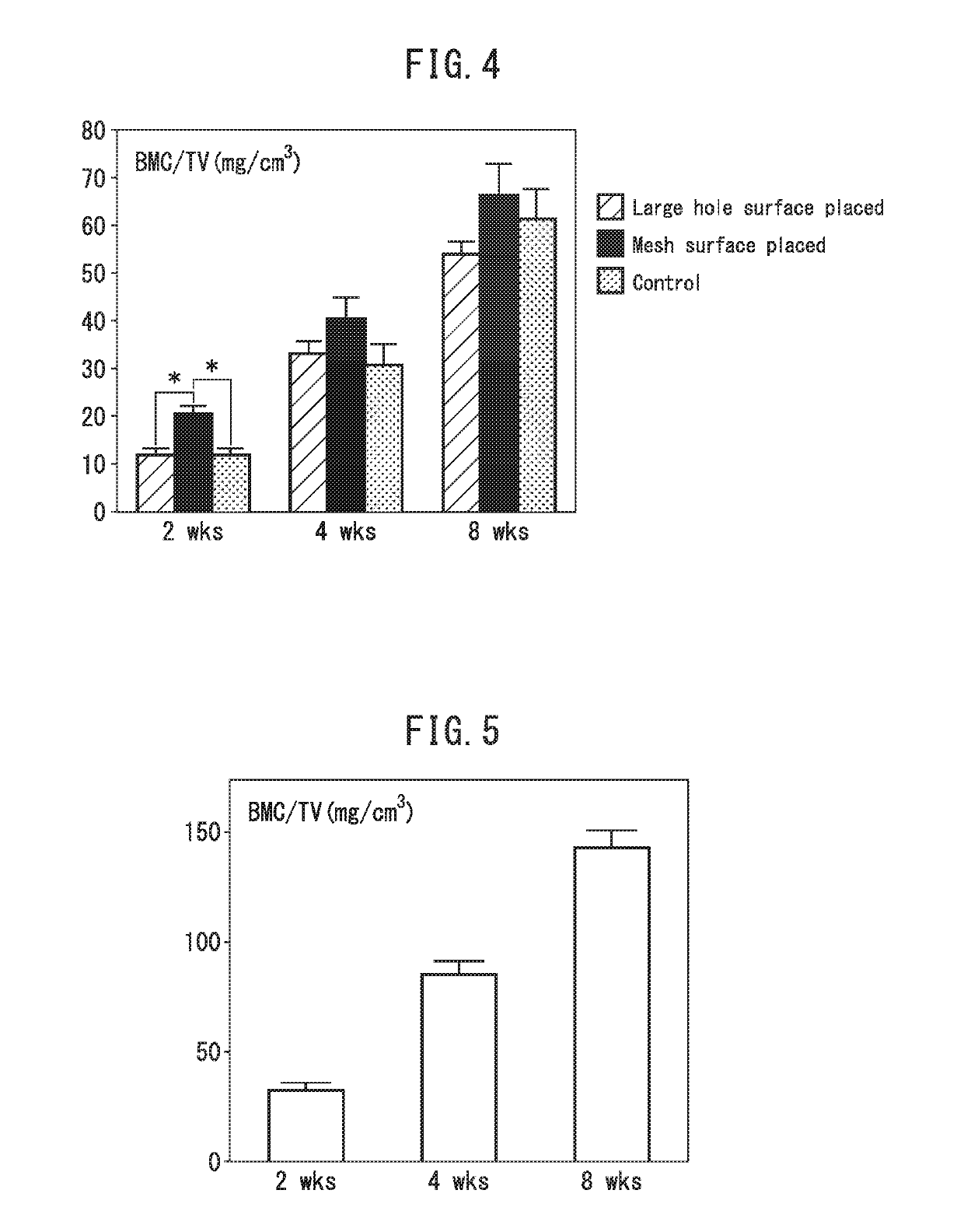Implant and kit for treatment of bone lesion site, as well as method for treating bone lesion site
a kit and bone injury technology, applied in the field of implants and kits for treating bone injury sites, can solve the problems of not having a unique effect on healing bone injuries, methods that are not suitable for large injuries losses, etc., and achieve the effects of improving the proliferative capacity of these cells, convenient and effective treatment of bone injuries, and accelerating the treatment of bone injury sites
- Summary
- Abstract
- Description
- Claims
- Application Information
AI Technical Summary
Benefits of technology
Problems solved by technology
Method used
Image
Examples
example 1
[0171]After general anesthesia of 9-week-old LEW rats with 2-3% isoflurane, they were subjected to infiltration anesthesia in the operating field, with 1 / 10,000 epinephrine-containing lidocaine. A region wider than the incision site was shaved, and then an incision was made at the top of the head on a straight line up to the subperiosteum, for sufficient delineation of the operating field. After detaching the dermal periosteal flap and exposing the parietal bone, a trephine bur was used to form two 4 mm-diameter circular bone loss sections under poured sterile physiological saline. After covering the loss section with a sterilized porous polyimide film, the dermal periosteal flap was reinstated and sutured with a nylon thread. The mesh surface (A-surface) of a porous polyimide film was placed in the wound area to prepare one model, and the large-hole surface (B-surface) was placed to prepare another model. After 2 weeks, 4 weeks and 8 weeks, the state of healing of the loss section ...
example 2
[0172]After harvesting femora and tibia of 8-week-old GFP transgenic rats and cutting off both ends of each bone, bone marrow cell masses were harvested by flushing with 10% FBS-added DMEM medium. The cell masses were pulverized by pipetting, and 1.0×106 bone marrow cells were seeded on the mesh surface (A-surface) of a 1.5 cm-square porous polyimide film and stationary cultured for 5 days in DMEM medium containing 10% FBS. On the 6th day, the cell-adhered porous polyimide film was rinsed with phosphate buffer and further cultured for 1 day, after only changing the medium to DMEM. After general anesthesia of 9-week-old nude rats with 2-3% isoflurane, they were subjected to infiltration anesthesia in the field of operation, with 1 / 10,000 epinephrine-containing lidocaine. A region wider than the incision site was shaved, and then an incision was made at the top of the head on a straight line up to the subperiosteum, for sufficient delineation of the operating field. After detaching th...
example 3
[0173]After harvesting femora and tibia of 8-week-old GFP transgenic rats and cutting off both ends of each bone, bone marrow cell masses were harvested by flushing with 10% FBS-added DMEM medium. The cell masses were pulverized by pipetting, and 1.0×106 bone marrow cells were seeded on the mesh surface (A-surface) of a 1.5 cm-square porous polyimide film and stationary cultured for 5 days in DMEM medium containing 10% FBS. After exchanging the DMEM medium, culturing was continued for 1 day. Next, 1.0×106 bone marrow cells were seeded on the mesh surface (A-surface) of a porous polyimide film and stationary cultured for 5 days in DMEM medium containing 10% FBS. On the 6th day, the cell-adhered porous polyimide film was rinsed with phosphate buffer and further cultured for 1 day, after only changing the medium to DMEM. After general anesthesia of 9-week-old nude rats with 2-3% isoflurane, they were subjected to infiltration anesthesia in the field of operation, with 1 / 10,000 epinephr...
PUM
| Property | Measurement | Unit |
|---|---|---|
| pore diameter | aaaaa | aaaaa |
| pore diameter | aaaaa | aaaaa |
| thickness | aaaaa | aaaaa |
Abstract
Description
Claims
Application Information
 Login to View More
Login to View More - R&D
- Intellectual Property
- Life Sciences
- Materials
- Tech Scout
- Unparalleled Data Quality
- Higher Quality Content
- 60% Fewer Hallucinations
Browse by: Latest US Patents, China's latest patents, Technical Efficacy Thesaurus, Application Domain, Technology Topic, Popular Technical Reports.
© 2025 PatSnap. All rights reserved.Legal|Privacy policy|Modern Slavery Act Transparency Statement|Sitemap|About US| Contact US: help@patsnap.com



